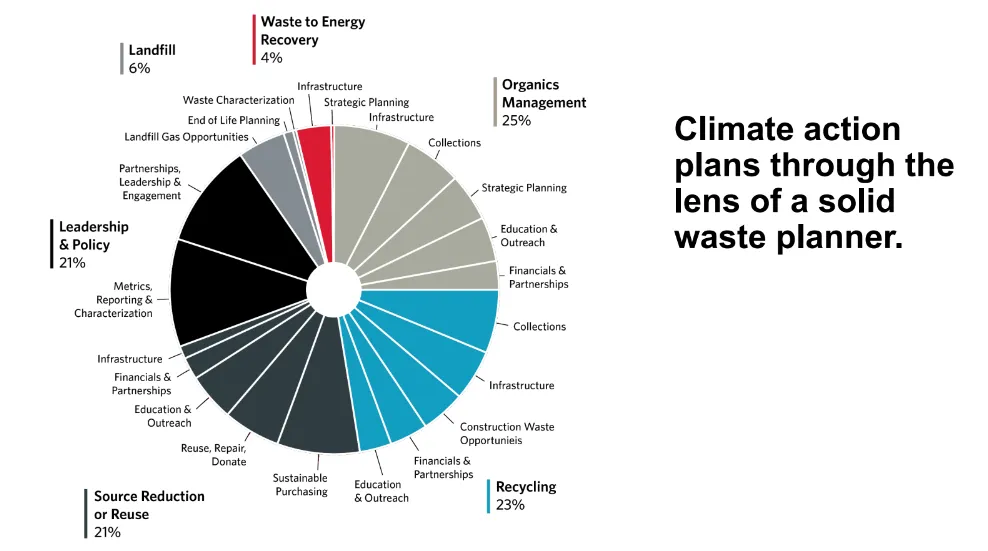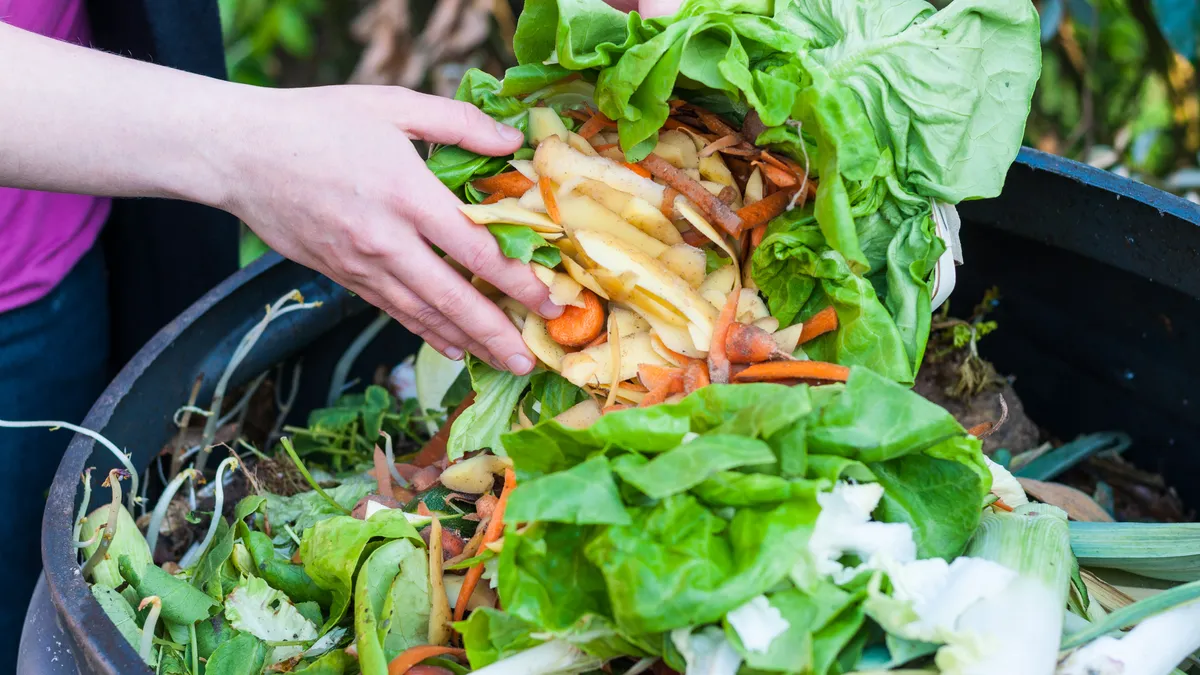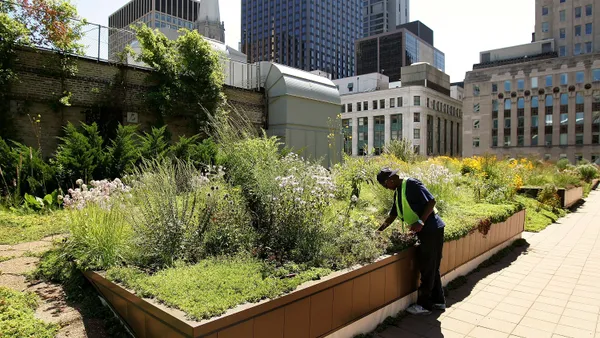Many cities undertake both solid waste and climate action planning, but how well are they aligned and where are there opportunities for complementary strategies going forward?
Professionals at HDR – a firm specializing in engineering, architecture, environmental and construction services – recently analyzed climate action plans from 20 North American cities and counties and found a diverse range of more than 300 waste-related actions. They detailed their findings during a webinar Tuesday and discussed how embedding waste management strategies into regional decarbonization plans will be pivotal for long-term climate resiliency.

Research illuminated common ground across climate action plans and solid waste planning, although they don’t necessarily use the same language. There appear to be opportunities to collaborate to more efficiently meet goals in both areas, particularly given that they involve the same communities, policy leaders, and residents who are being asked to make behavior changes, explained Senior Waste/Environmental Project Manager Kate Bartelt. In many cases, residents are asking for programs through a climate lens, Bartelt said.

Organics-related actions were the most dominant waste theme across climate action plans, Bartelt said, likely given their potential for advancing methane reduction. No single waste solution was powerful enough to meet local climate goals, but combining several strategies together can make an impact. “I wish I could say there’s an easy button, but there isn’t,” Bartelt.
The team also found that 70% of climate action plan solutions align with the U.S. EPA’s waste management hierarchy, which first encourages source reduction and reuse and considers landfills a last resort. In accordance with the top of the EPA hierarchy, sustainable purchasing was a recurring theme. Senior Vice President Kevin de Lange shared the example of a Fairfax County, Virginia, zero waste plan for schools and government that seeks to ultimately eliminate single-use and hard-to-recycle items and materials.
The next step at HDR and for municipalities would be to more closely assess which mix of solid waste strategies to prioritize to maximize climate benefits.
“In a lot of these climate action plans, there wasn't that next step of what do you do first” based on emissions or other metrics, Bartelt said. “A lot of these plans put that as a critical path item that they needed to identify that ... One of the pieces that we are planning to do in this research is to dive a little deeper, so we can start trying to help understand what would be some of those priority projects.”














